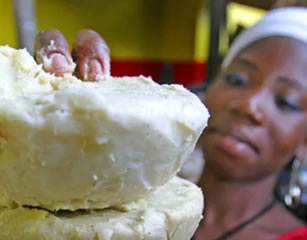 Summertime is right around the corner and for many people that means that it’s time to get a sun-kissed tan. In order to achieve this, that means absorbing UV rays into your skin to produce more of a pigment called melanin. Each person’s skin is unique and different, which means the amount of melanin your body contains is different as well. The more melanin a person has, the darker their skin will appear. Some people might get a tan easier and quicker than others do. While we are each unique, we are the same in regards to the effects of sunlight. Too much exposure to UV rays can lead to sunburn, sun poisoning, and skin cancer. In order to prevent these cases, here are a few tips to help maximize your skin color while taking precautions from getting too much sun:
Summertime is right around the corner and for many people that means that it’s time to get a sun-kissed tan. In order to achieve this, that means absorbing UV rays into your skin to produce more of a pigment called melanin. Each person’s skin is unique and different, which means the amount of melanin your body contains is different as well. The more melanin a person has, the darker their skin will appear. Some people might get a tan easier and quicker than others do. While we are each unique, we are the same in regards to the effects of sunlight. Too much exposure to UV rays can lead to sunburn, sun poisoning, and skin cancer. In order to prevent these cases, here are a few tips to help maximize your skin color while taking precautions from getting too much sun:
Prep Your Skin
Just like you prime your walls for paint, you should prime your skin for sun exposure. Exfoliate all of the dead skin off your body from head to toe. If you don’t, the sun can end up tanning mostly dead skin that will just fall off. It is also recommended to shave areas that are going to be exposed to sunlight in order to achieve a more even tan. An additional boost to your skin would be to eat some fruits or vegetables before going out in the sun. The vitamins and antioxidants from healthy food can actually help protect against sunburn. The sun is drying to skin, so be sure to drink plenty of water before, during, and after you get sun exposure to help replenish any hydration that is lost.
Never Skip Lotion
Hydration is key when it comes to an even, long-lasting tan. Moisturized skin tans more evenly than dry skin does, so keeping skin moisturized before you even begin tanning can be an important step in your tanning routine. Tanning lotion and/or sunscreen should never be missed when tanning. Be extremely careful when using tanning lotion as it normally does not contain SPF. It is recommended to mix sunscreen with it to help prevent any sun damage and reapply every two hours. Never go tanning without anything to put on your skin, period. The sun will take the moisture from lotion first before it begins to take the moisture out of your skin. This will help to keep skin healthy and hydrated and to prevent wrinkles. Lastly, applying lotion, especially those that contain aloe vera, after you get in the sun is a great way to maintain and keep your tan. It replenishes moisture that is lost and keeps your color longer because it helps to fight dry, flaking skin.
Know Your Limits
As mentioned before, every person’s skin is unique and different. Some people react differently to the sun than others do. It is important to know and understand the limits of your skin and how much sun exposure it can handle. While one person can lay out for six hours and not get any additional color, another person might can only handle thirty minutes before he starts turning pink. You should start tanning at small increments at a time to get a better sense of your limits and when you should stop. Bring additional clothing and a hat with you to cover up with if you start getting too much sun. If you get too much sun exposure, give your skin plenty of time to heal before you get back to tanning. Setting boundaries for yourself and getting out of the sun when you’ve had too much is essential when taking good care of your skin.




